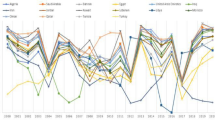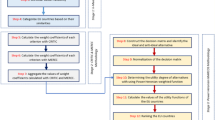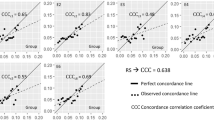Abstract
The European Union (EU) 2020 Strategy aims at forming the conditions for smart, sustainable and inclusive growth targets. Assessment of the EU countries’ situation is of vital importance in attaining the EU 2020 Strategy. This paper presents an impartial evaluation of the performance of 27 EU member countries in terms of each EU 2020 Strategy. For the basis of the evaluation, we propose an effective and easily practicable measure for ranking and monitoring the countries according to their performance by using the VIKOR and the TOPSIS methods, multi-criteria decision making (MCDM) methods, which allows for the integration of the 22 indicators, and be capable of considering such a broad spectrum of criteria including various economic, financial, demographic, educational and innovational. Our study provides a comparative analysis of the above-two methods. The contribution of the study to the literature is that these methods can be applied for assessing countries in terms of the EU 2020 Strategy which have the multi–dimensionality targets. The results point out new EU member countries such as Slovenia and Romania have attained higher scores than many of the 15 EU countries.


Similar content being viewed by others
References
Barroso, J. M. (2010). Europe: 2020. Presentation to the informal European council of 11 February 2010, Brussels.
Behzadian, M., Otaghsara, S. K., Yazdani, M., & Ignatius, J. (2012). A state of the art survey of TOPSIS applications. Expert Systems with Applications, 39, 13051–13069.
Bere, et al. (2015). On growth poles from EU countries in the framework of Europe 2020. Procedia Economics and Finance, 23, 920–925.
Böhringer, C., Löschel, A., Moslener, U., & Rutherford, T. F. (2009). EU climate policy up to 2020: An economic impact assessment. EU Energy Economics, 31, 295–305.
Boran, F. E., Genç, S., Kurt, M., & Akay, D. (2009). A multi-criteria intuitionistic fuzzy group decision making for supplier selection with TOPSIS method. Expert Systems with Applications, 36, 11363–11368.
Brauers, W. K., Balezentis, A., & Balezentis, T. (2012). European Union member states preparing for Europe 2020. An application of the MULTIMOORA method. Technological and Economic Development of the Economy, 18, 567–587.
Brauers, W. K. M., & Zavadskas, E. K. (2013). Multi-objective decision making with a large number of objectives. An application for Europe 2020. International Journal of Operations Research, 10(2), 67–79.
Chu, M. T., Shyu, J., Tzeng, G. H., & Khosla, R. (2007). Comparison among three analytical methods for knowledge communities group decision analysis. Expert Systems with Applications, 33(4), 1011–1024.
Codogno, L., Odinet, G., & Padrini, F. (2009). The use of targets in the Lisbon strategy. Economic Focus, 14. Rome: Ministry of Economy and Finance.
Colak, M. S., & Ege, A. (2013). An assessment of EU 2020 strategy: Too far to reach? Social Indicators Research, 110, 659–680. https://doi.org/10.1007/s11205-011-9950-2.
Copeland, P., & Daly, M. (2012). Varieties of poverty reduction: Inserting the poverty and social exclusion target into Europe 2020. Journal of European Social Policy, 22(3), 273–287.
Cristóbal, J. R. S. (2011). Multi-criteria decision-making in the selection of a renewable energy project in Spain: The VIKOR method. Renewable Energy, 36, 498–502.
Cristobel, J. R. S. (2012). Contractor selection using multicriteria decision making methods. Journal of Construction Engineering and Management, 138(6), 751–758.
Demirel, N. Ç., & Yucenur, G. N. (2011). The cruise port place selection problem with extended VIKOR and ANP methodologies under fuzzy environment. In Proceedings of the World Congress on Engineering (Vol. 2).
Deng, H., Yeh, C.-H., & Willis, R. J. (2000). Inter-company comparison using modified TOPSIS with objective weights. Computers & Operations Research, 27, 963–973.
Dincer, S. E. (2011). Multi-criteria analysis of economic activity for European Union member states and candidate countries: TOPSIS and WSA Application. European Journal of Social Sciences, 21(4), 563–572.
Erixon, F. (2010). The Europe 2020 strategy: Time for Europe to think again. European View, 2010(9), 29–37. https://doi.org/10.1007/s12290-010-0120-8.
Europe 2020 Strategy. (2010). Communication from the commission Europe 2020 a strategy for smart, sustainable and inclusive growth. Brussels, http://ec.europa.eu/europe2020/index_en.htm. Accessed 14 Feb 2017.
European Commission. (2017). EUROSTAT database. Cited 26.05.2017. http://ec.europa.eu/eurostat/web/europe-2020-indicators/europe-2020-strategy.
Fischer, S., Gran, S., Hacker, B., Jakobi, A. P., Petzold, S., Pusch, T., et al. (2010). Europe 2020: Proposals for the post-Lisbon strategy. International policy analysis. Berlin: Friedrich Ebert Stiftung.
Flynt, A., & Dean, N. (2016). A survey of popular R packages for cluster analysis. Journal of Educational and Behavioral Statistics, 41(2), 205–225.
Freudenberg, M. (2003). Composite indicators of country performance: A critical assessment. OECD Science, Technology and Industry Working Papers. Paris: OECD Publishing. http://dx.doi.org/10.1787/405566708255.
Graells, A. S. (2015). Public procurement and the EU competition rules (2nd ed.). London: Bloomsbury Publishing. ISBN 9781782259992.
Granieri, M., & Renda, A. (2012). Innovation law and policy in the European Union: Towards Horizon 2020. Berlin: Springer. https://doi.org/10.1007/978-88-470-1917-1.
Gros, D., & Roth, F. (2012). The Europe 2020 strategy can it maintain the EU’s competitiveness in the world? Centre for European Policy Studies (CEPS), Brussels.
Han, J., Kamber, M., & Pei, J. (2012). Data mining concepts and techniques (3rd ed.). Elsevier: Morgan Kaufmann Publishers.
Hwang, C. L., & Yoon, K. (1981). Multiple attribute decision making: Methods and applications, a state of the art survey. Lecture notes in economics and mathematical systems (p. 129). New York: Springer.
Inan, A., (2005). Avrupa Birliği ekonomik yaklaşımı: Lizbon stratejisi ve maastricht kriterleri. Bankacılar Dergisi, 52, ISSN 13-0217.
International Monetary Fund. (2017). World economic outlook database. Cited 20.04.2017. https://www.imf.org/en/Data.
Jee, D. H., & Kang, K. J. (2000). A method for optimal material selection aided with decision making theory. Materials and Design, 21, 199–206.
Kaya, P., Cetin, Eİ., & Kuruuzum, A. (2011). ÇKKV ile Avrupa Birliği ve aday ülkelerin yaşam kalitesinin analizi. İstanbul Üniversitesi İktisat Fakültesi Ekonometri ve İstatistik Dergisi, 13, 80–94.
Kontolomis, Z. (2003). Exchange rates are a matter of common concern: Policies in the run-up to the euro? European Commission, Directorate- General Economic and financial affairs. Economic Papers, ISSN 1725-3187, No: 191.
Kumar, A., Sah, B., Singh, A. R., Deng, Y., He, X., Kumar, P., et al. (2017). A review of multi criteria decision making (MCDM) towards sustainable renewable energy development. Renewable and Sustainable Energy Reviews, 69, 596–609.
Lai, Y. L., Liu, T. Y., & Hwang, C. L. (1994). TOPSIS for MODM. European Journal of Operational Research, 76, 486–500.
Li, H., Adeli, H., Sun, J., & Han, J. G. (2011). Hybridizing principles of TOPSIS with case-based reasoning for business failure prediction. Computers & Operations Research, 38(2), 409–419.
Malekly, H., Mousavi, S. M., & Hashemi, H. (2010). A fuzzy integrated methodology for evaluating conceptual bridge design. Expert Systems with Applications, 37, 4910–4920.
Martens, W. (2010). Europe 2020 and beyond. European View, 2010(9), 1–3. https://doi.org/10.1007/s12290-010-0123-5.
Mir, M. A., Ghazvinei, P. T., Sulaiman, N. M. N., Basri, N. E. A., Saheri, S., Mahmood, N. Z., et al. (2016). Application of TOPSIS and VIKOR improved versions in a multi criteria decision analysis to develop an optimized municipal solid waste management model. Journal of Environmental Management, 166, 109–115.
Navarro, V. (2000). Assessment of the world health report 2000. The Lancet, 356(4), 1598–1601.
Nolan, B., & Whelan, C. T. (2011). The EU 2020 poverty target. Amsterdam, AIAS, GINI Discussion Paper 19.
Opricovic, S. (1998). Multicriteria optimization of civil engineering systems. Ph.D. thesis, Faculty of Civil Engineering, Belgrade.
Opricovic, S., & Tzeng, G.-H. (2004). Compromise solution by MCDM methods: A comparative analysis of VIKOR and TOPSIS. European Journal of Operational Research, 156(2), 445–455.
Opricovic, S., & Tzeng, G.-H. (2007). Extended VIKOR method in comparison with outranking methods. European Journal of Operational Research, 178, 514–529.
Ozden, Ü. H. (2012). AB’ye üye ülkelerin ve Türkiye’nin ekonomik performanslarına göre VIKOR yöntemi ile sıralanması. İstanbul Ticaret Üniversitesi Sosyal Bilimler Dergisi, 11(21), 455–468.
Parker, L. (2010). Climate change and the EU emissions trading scheme (ETS): Looking to 2020. CRS Report for Congress.
Pasimeni, P. (2012). Measuring Europe 2020: a new tool to assess the strategy. International Journal of Innovation and Regional Development, 5(4), 365–385.
Pasimeni, P. (2013). The Europe 2020 index. Social Indicators Research, 110(3), 613–635. https://doi.org/10.1007/s11205-011-9948-9.
Pasimeni, F., & Pasimeni, P. (2016). An institutional analysis of the Europe 2020 strategy. Social Indicators Research, 127, 1021–1038. https://doi.org/10.1007/s11205-015-1013-7.
Rappai, G. (2016). Europe en route to 2020: A new way of evaluating the overall fulfillment of the Europe 2020 strategic goals. Social Indicators Research, 129, 77–93. https://doi.org/10.1007/s11205-015-1092-5.
Renda, A. (2014). The review of the Europe 2020 strategy: From austerity to prosperity? CEPS policy brief, 322, 27.
Rodrigues, M. J. (2002). The new knowledge economy in Europe—A strategy for international competitiveness and social cohesion. Cheltenham: Edward Elgar.
Rogge, N., & Konttinen, E. (2018). Social inclusion in the EU since the enlargement: Progress or regress? Social Indicator Research, 135, 563–584.
Ross, T. J. (2010). Fuzzy logic with engineering applications (3rd ed.). Publication: Wiley.
Sapir, A. (2004). An agenda for growing Europe. The Sapir report. Oxford: Oxford University Press.
Sayadi, M. K., Heydari, M., & Shahanaghi, K. (2009). Extension of VIKOR method for decision making problem with interval numbers. Applied Mathematical Modelling, 33, 2257–2262.
Shemshadi, A., Shirazi, H., Toreihi, M., & Tarokh, M. J. (2011). A fuzzy VIKOR method for supplier selection based on entropy measure for objective weighting. Expert Systems with Applications, 38(10), 12160–12167.
Stec, M., & Grzebyk, M. (2016). The implementation of the strategy Europe 2020 objectives in European Union countries: The concept analysis and statistical evaluation. Quality & Quantity, 52, 119–133. https://doi.org/10.1007/s11135-016-0454-7.
Tong, L.-I., Chen, C.-C., & Wang, C.-H. (2007). Optimization of multi-response processes using the VIKOR method. International Journal of Advanced Manufacturing Technology, 31(11–12), 1049–1057.
Tucker, C. (2003). The Lisbon strategy and the open method of coordination: A new vision and the revolutionary potential of soft governance in the European Union. Annual Meeting of the American Political Science Association, 28–31 August.
Urfalıoglu, F., & Genc, T. (2013). CKKV teknikleri ile Türkiye’nin ekonomik performansının Avrupa Birliği üye ülkeleri ile karşılaştırılması. Marmara Üniversitesi İ.İ.B. Dergisi, 35(2), 329–360.
Vahdani, B., Mousavi, S. M., & Tavakkoli-Moghaddam, R. (2011). Group decision making based on novel fuzzy modified TOPSIS method. Applied Mathematical Modelling, 35, 4257–4269.
Velasquez, M., & Hester, P. T. (2013). An analysis of multi-criteria decision making methods. International Journal of Operations Research, 10(2), 56–66.
Velmurugan, T. (2014). Performance based analysis between k-means and fuzzy c-means clustering algorithms for connection oriented telecommunication data. Applied Soft Computing, 19, 134–136.
Warleigh-Lack, A. (2011). Greening the European Union for legitimacy? A cautionary reading of Europe 2020. Innovation. The European Journal of Social Science, 23(4), 297–311.
World Economic Forum. (2012). The Europe 2020 competitiveness report: Building a more competitive Europe. Insight report, ISBN-10: 978-92-95044-43-2, Geneva. http://www3.weforum.org/docs/CSI/2012/Europe2020_Competitiveness_Report_2012.pdf.
Yoon, K., & Hwang, C. L. (1985). Manufacturing plant location analysis by multiple attribute decision making: Part I single-plant strategy. International Journal of Production Research, 23(2), 345–359.
Zeitlin, J. (2008). The open method of co-ordination and the governance of the Lisbon strategy. Journal of Common Market Studies, 46(2), 436–450.
Zhang, N., & Wei, G. (2013). Extension of VIKOR method for decision making problem based on hesitant fuzzy set. Applied Mathematical Modelling, 37, 4938–4947.
Zhou, P., & Ang, B. W. (2009). Comparing MCDA aggregation methods in constructing composite indicators using the Shannon–Spearman measure. Social Indicators Research, 96, 169–181. https://doi.org/10.1007/s11205-008-9338-0.
Author information
Authors and Affiliations
Corresponding author
Appendix
Appendix
The k-means or hard c-means clustering is one of the unsupervised learning algorithms, and a set of statistical methods for determining new structure when investigating data sets (Flynt and Dean 2016). The algorithm is based on a constrained optimization problem with the locally minimum of the objective function \(J\left( {U, v} \right)\), where U is the partition matrix and the parameter v is the cluster centers. That constrained problem follows a simple way to classify a given data set on the assumption that where the number of clusters namely c, is known (Ross 2010; Velmurugan 2014). In the method the k-partition space and the objective function as following:
where \(d_{ik} ,\) is chosen distance measure between k. data point \(\varvec{x}_{k}\) and i. cluster center \(v_{i}\).
The optimization method is composed of the following steps (Ross 2010):
- Step 1 :
-
\(2 \le c \le n\), and initialize the \(U\) matrix. \(U_{0} \in M_{c}\)
- Step 2 :
-
Calculate the cluster center \(\left\{ {v_{i}^{\left( r \right)} } \right\}, \left( {r = 0, 1, \ldots } \right)\) and the distance \(\left\{ {d_{ik}^{\left( r \right)} } \right\}\) between data point and cluster center
- Step 3 :
-
Update the \(U^{\left( r \right)}\) matrix for the \(r.\) step, \(U^{\left( r \right)}\), as follows:
$$\chi_{ik}^{{\left( {r + 1} \right)}} = \left\{ {\begin{array}{*{20}c} {1, d_{ik}^{\left( r \right)} = min\left\{ {d_{jk}^{\left( r \right)} } \right\} for all j \in c} \\ {0, otherwise} \\ \end{array} } \right.$$(17) - Step 4 :
-
If \(U^{{\left( {r + 1} \right)}} - U^{\left( r \right)} \le \varepsilon\) stop; otherwise set \(r = r + 1\) and return to step 2
Rights and permissions
About this article
Cite this article
Ture, H., Dogan, S. & Kocak, D. Assessing Euro 2020 Strategy Using Multi-criteria Decision Making Methods: VIKOR and TOPSIS. Soc Indic Res 142, 645–665 (2019). https://doi.org/10.1007/s11205-018-1938-8
Accepted:
Published:
Issue Date:
DOI: https://doi.org/10.1007/s11205-018-1938-8




